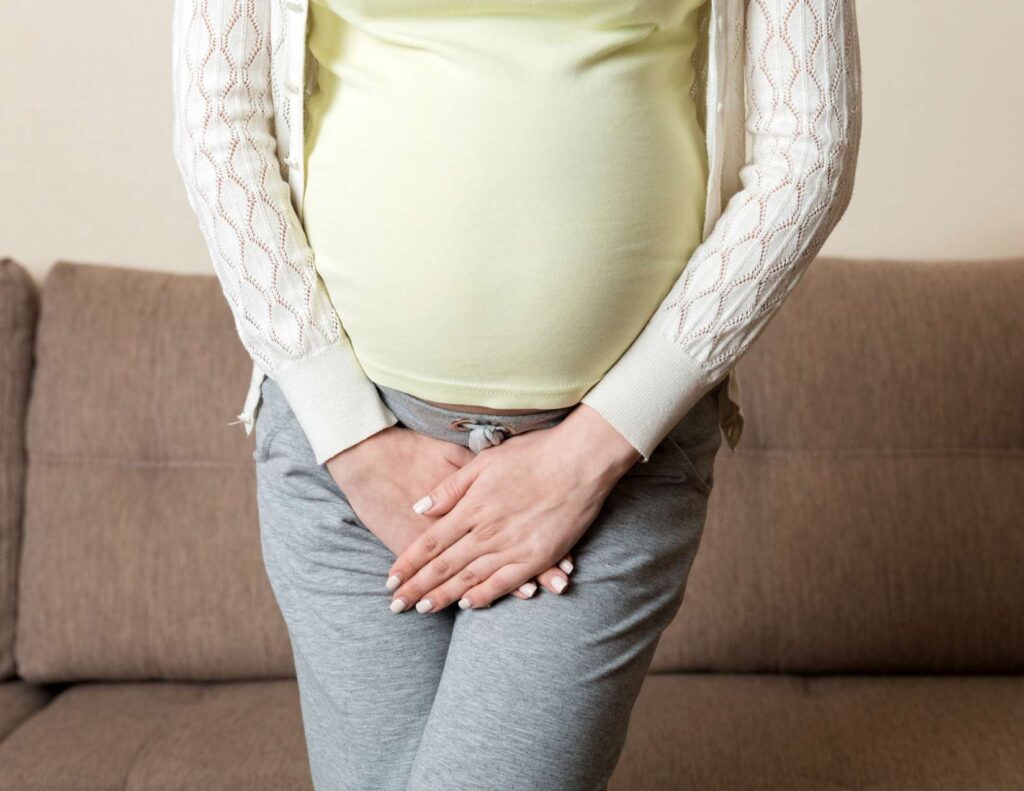Symphysis Pubis Dysfunction in Pregnancy: How to Manage Pain
Pregnancy is a beautiful experience, but it can also come with its share of discomforts and challenges. One such discomfort is symphysis pubis dysfunction (SPD). SPD is a condition that affects the pelvic joint and can cause pain and discomfort during pregnancy and labor. In this article, I will discuss what Symphysis Pubis Dysfunction in Pregnancy is, its symptoms, causes, diagnosis, and treatment options. I will also share exercises, tips, and alternative therapies that can help manage SPD pain and discomfort during pregnancy.

Table of Contents
Introduction to Symphysis Pubis Dysfunction in Pregnancy
Symphysis Pubis Dysfunction (SPD) is a condition that affects the pelvic joint, which is located at the front of the pelvis. During pregnancy, the pelvic joint naturally becomes more flexible, which allows the baby to pass through during delivery. However, in some women, the pelvic joint becomes too flexible, leading to SPD.
Symphysis Pubis Dysfunction in pregnancy can cause pain and discomfort in the pelvic area, lower back, hips, and inner thighs. The pain can range from mild to severe and can affect a woman’s ability to walk, stand, sit, and sleep comfortably. SPD can also make it difficult for a woman to perform daily activities and can affect her quality of life.
Symptoms and Causes of SPD
The symptoms of SPD can vary from woman to woman and can include:
- Pain and discomfort in the pelvic area, lower back, hips, and inner thighs
- A clicking or grinding sensation in the pelvic joint
- Difficulty walking, standing, sitting, and sleeping
- Pain during sexual intercourse
- Pain when lifting or carrying objects
- A waddling gait
- Numbness or tingling in the legs
The causes of SPD are not fully understood, but several factors can contribute to its development. These factors include:
- Hormonal changes during pregnancy that relax the pelvic joint
- Previous injury to the pelvic joint
- Overuse of the pelvic joint
- Poor posture
- Misalignment of the pelvic joint

When Does SPD Start in Pregnancy?
Symphysis Pubis Dysfunction (SPD) can start as early as the first trimester. It is important to talk to your health care provider if you experience any pain or discomfort in that area, as it could be a sign of SPD. Your doctor may suggest various treatments and exercises to help alleviate your symptoms. Additionally, there are self-care measures you can take at home to help manage your pain. Be sure to talk to your doctor before beginning any type of exercise program. If you experience severe symptoms or difficulty walking, it is important to seek out proper care right away.
Diagnosis and Treatment of SPD
If you are experiencing symptoms of SPD, you should consult your healthcare provider. Your provider will perform a physical exam and may order imaging tests, such as an X-ray or MRI, to diagnose SPD.
Treatment for SPD can include a combination of therapies, including:
Physical therapy:
A physical therapist can provide exercises and stretches to help strengthen the pelvic muscles and improve flexibility.
Pain management:
Your healthcare provider may recommend pain-relieving medications, such as acetaminophen or ibuprofen, to manage SPD pain.
Supportive devices:
Support belts, pelvic girdles, and other supportive devices can help stabilize the pelvic joint and reduce pain and discomfort.
Rest and modification of activities:
Resting and avoiding activities that exacerbate SPD symptoms can help manage pain and discomfort.
Alternative therapies:
Acupuncture, chiropractic care, and massage therapy can provide relief from SPD pain and discomfort.

Exercises to Relieve SPD Pain
Exercise can help relieve SPD pain and discomfort by strengthening the pelvic muscles and improving flexibility. Here are some symphysis pubis dysfunction exercises that can help manage pain during pregnancy:
Kegels:
Kegel exercises can help strengthen the pelvic floor muscles, which can improve pelvic stability and reduce pain and discomfort. To perform Kegels, tighten your pelvic muscles as if you are trying to stop the flow of urine. Hold for 5 seconds, then release. Repeat 10 times, three times a day.
Pelvic tilts:
Pelvic tilts can help relieve lower back pain and improve pelvic stability. To perform pelvic tilts, lie on your back with your knees bent and feet flat on the floor. Tighten your abdominal muscles and press your lower back into the floor. Hold for 5 seconds, then release. Repeat 10 times, three times a day.
Inner thigh stretches:
Inner thigh stretches can help improve flexibility and reduce pain and discomfort in the pelvic area. To perform inner thigh stretches, sit on the floor with the soles of your feet together and your knees out to the sides. Gently press your knees down towards the floor until you feel a stretch in your inner thighs. Hold for 30 seconds, then release. Repeat three times.

Tips for Managing SPD Discomfort at Home
In addition to exercise, there are several things you can do at home to manage SPD discomfort during pregnancy:
Practice good posture:
Maintaining good posture can help reduce pressure on the pelvic joint and reduce pain and discomfort.
Use a pregnancy pillow:
A pregnancy pillow can provide support for your belly and hips and help you sleep more comfortably.
Wear supportive shoes:
Wearing shoes with good arch support can help reduce the impact on your pelvic joint and reduce pain and discomfort.
Take warm baths:
Soaking in a warm bath can help relax your muscles and reduce pain and discomfort.
Avoid heavy lifting:
Lifting heavy objects can exacerbate SPD symptoms and increase pain and discomfort.
Why is SPD Worse at Night?
Symphysis pubis dysfunction (SPD) is often more pronounced in the evenings and nights due to changes in activity throughout the day. The ligaments of your pelvic girdle may be irritated from everyday tasks such as walking, sitting, carrying or lifting, and this can cause greater discomfort at night – particularly when you are resting. As the muscles tire during the day, they cannot effectively support the pelvic girdle as usual, leading to increased inflammation and pain. Additionally, the hormones released during pregnancy can cause more laxity in the ligaments of your pelvic girdle, contributing to a heightened discomfort in the evenings and nights.

Use of Support Belts and Other Aids for SPD
Support belts, pelvic girdles, and other supportive devices for pregnancy can help stabilize the pelvic joint and reduce pain and discomfort. These devices work by providing support to the pelvic joint and reducing the pressure placed on it by the weight of the baby. Support belts and pelvic girdles can be worn under clothing and are adjustable to provide a custom fit. Speak with your healthcare provider about the best supportive device for your needs.
Medications for SPD Pain Relief in Pregnancy
If you are experiencing severe pain and discomfort from SPD, your healthcare provider may recommend pain-relieving medications. Acetaminophen and ibuprofen are considered safe for use during pregnancy and can provide relief from mild to moderate pain. However, it is essential to consult with your healthcare provider before taking any medication during pregnancy.
Alternative Therapies for SPD Pain Relief
Alternative therapies can provide relief from SPD pain and discomfort during pregnancy. These therapies work by promoting relaxation, reducing muscle tension, and improving blood flow to the affected area. Some alternative therapies that may help manage SPD pain and discomfort include:
Acupuncture:
Acupuncture involves the insertion of tiny needles into specific points in the body to promote healing and pain relief.
Chiropractic care:
Chiropractic care involves the manipulation of the spine and joints to improve alignment and reduce pain and discomfort. Unsure about the benefits of seeing a chiropractor during pregnancy?
Massage therapy:
Massage therapy involves the manipulation of soft tissue to promote relaxation and reduce muscle tension.
Coping with SPD During Labor and Delivery
SPD can affect the labor and delivery process. During labor, women with SPD may experience increased pain both in the pelvic area and lower back due to ligament instability which can be exacerbated by different levels of pressure applied during delivery. Women with SPD also tend to have a higher risk of needing medical interventions such as an epidural or C-section. Additionally, women with SPD may have difficulty pushing during labor due to the instability and pain in their pelvic area.

Recovery After Birth and Long-Term Effects of SPD
Recovery after birth can take time, especially if you have experienced SPD during pregnancy. It is essential to give your body time to heal and to avoid activities that exacerbate SPD symptoms. I highly recommend seeing a postpartum physical therapist who can help strengthen pelvic muscles and improve flexibility, which can aid in recovery. It is also essential to discuss any long-term effects of SPD with your healthcare provider, as some women may experience ongoing pain and discomfort after delivery.
Conclusion and Resources for Further Support
Symphysis Pubis Dysfunction is a common condition during pregnancy that can cause pain and discomfort in the pelvic joint. However, there are many treatment options available to manage SPD pain and discomfort safely and effectively. Exercise, supportive devices, alternative therapies, and pain medications can all provide relief from SPD symptoms. It is essential to speak with your healthcare provider about the best treatment options for your individual needs. If you are experiencing SPD during pregnancy, know that you are not alone, and there are resources available to help.
If you need additional support or resources, consider reaching out to your healthcare provider, a physical therapist, or a support group for women with SPD. With the right treatment and support, you can manage SPD pain and discomfort during pregnancy and enjoy a healthy and happy pregnancy!







